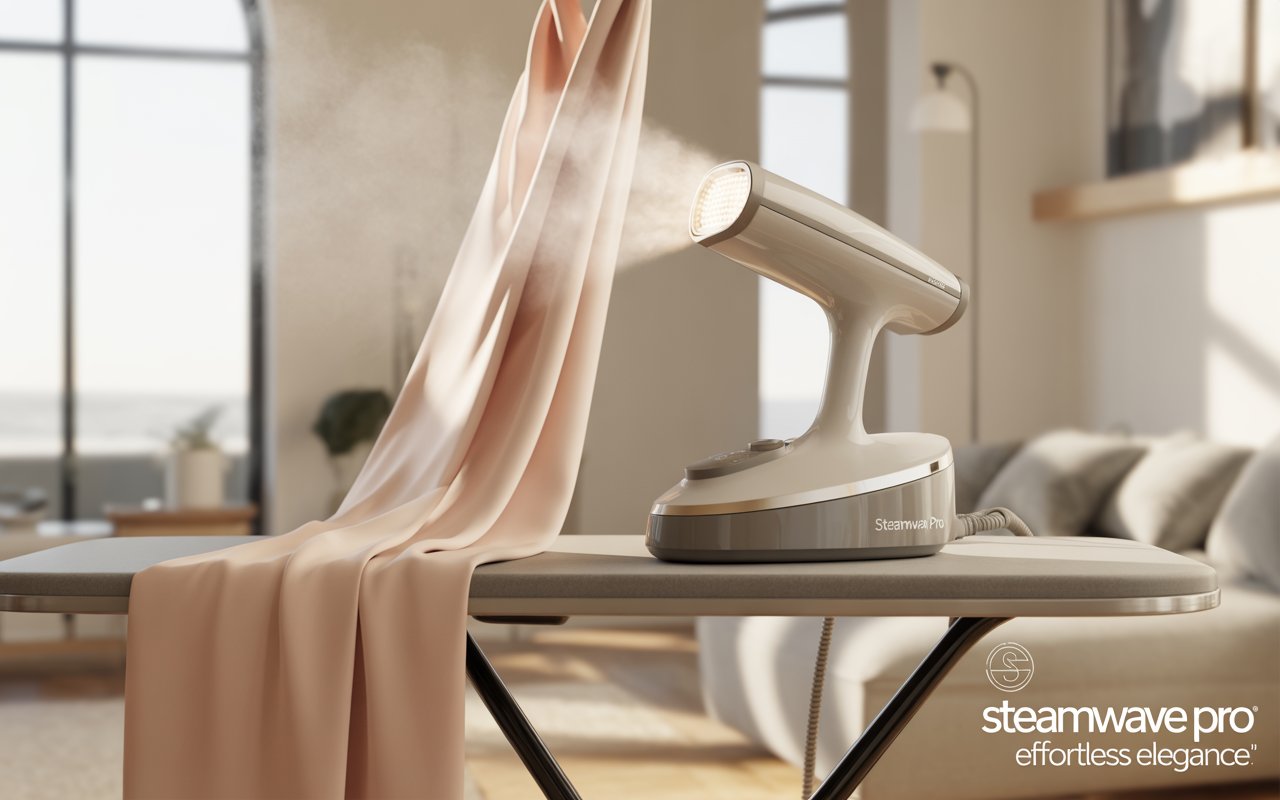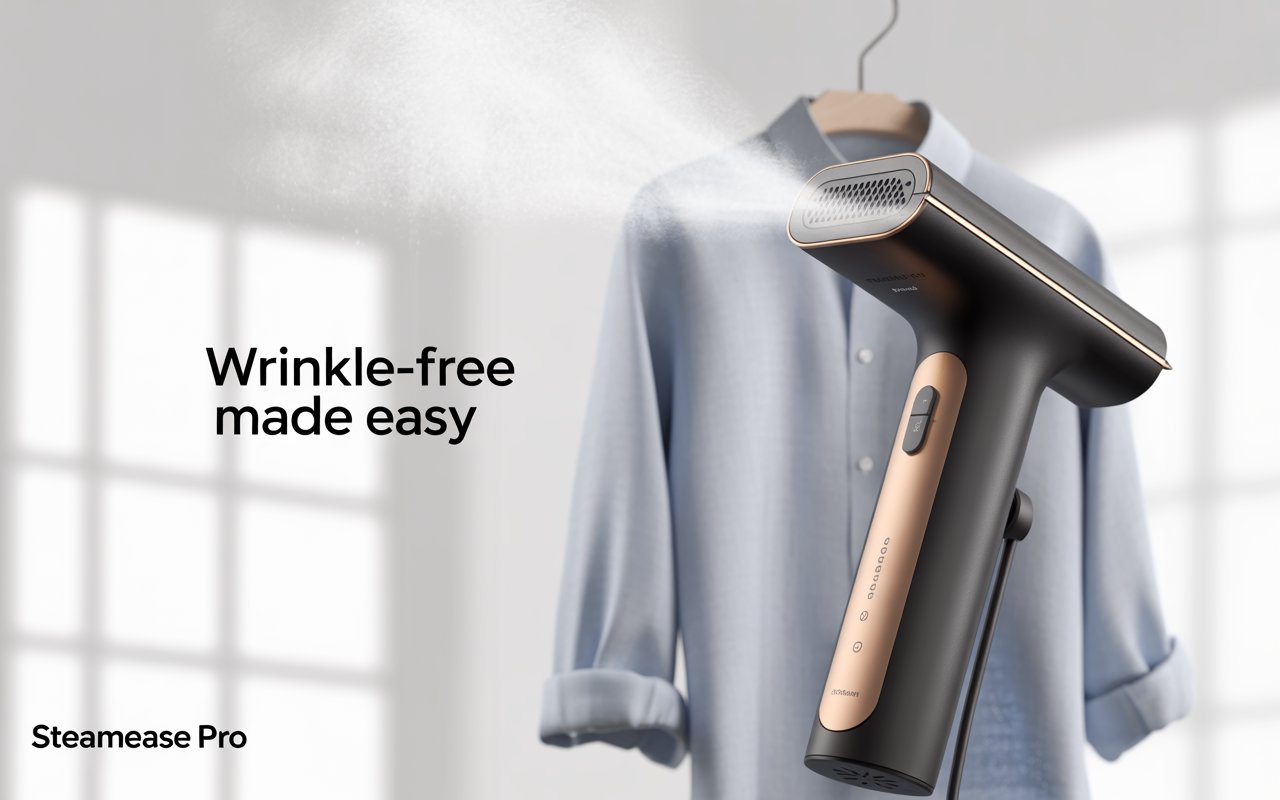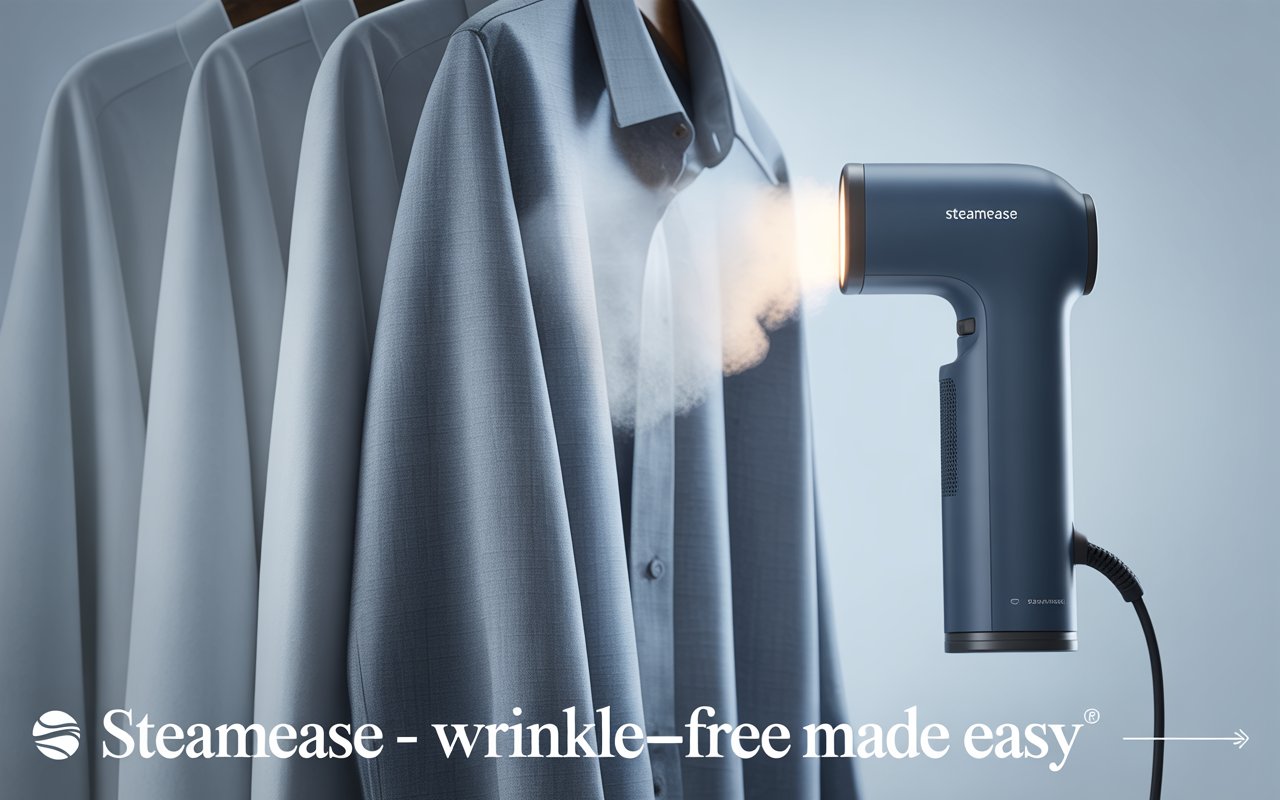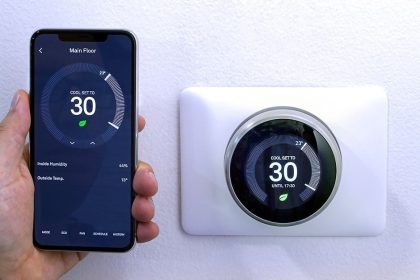When it comes to keeping clothes looking crisp and fresh, most of us immediately think of the good old iron. But have you ever struggled with stubborn creases or accidentally scorched your favorite shirt? That’s where steamers for clothes come in — the modern, effortless alternative to ironing.
In this comprehensive guide, we’ll explore everything you need to know about clothing steamers — from how they work and the different types available, to how to use and maintain them for the best results. Think of it as your go-to roadmap for a smooth, wrinkle-free wardrobe.
What Exactly Is a Clothes Steamer?
A clothes steamer, also known as a garment steamer or fabric steamer, is a device that uses hot steam to relax fabric fibers, removing wrinkles and freshening up garments. Unlike an iron, which presses fabric flat against a surface, a steamer gently releases wrinkles while the clothing hangs freely.
Imagine it like giving your clothes a mini spa treatment — instead of pressing them into submission, you’re soothing the creases away.
How Does a Steamer Work?
It’s simple science in action. A steamer heats water in a small tank or boiler until it turns into steam. This steam travels through a nozzle or hose and is directed onto the fabric. The heat and moisture loosen the fabric’s fibers, making wrinkles vanish without direct contact.
Here’s the basic process step by step:
-
Fill the tank with clean water (preferably distilled to prevent mineral buildup).
-
Turn on the steamer and wait for it to heat up — usually 30 seconds to 2 minutes.
-
Hold the nozzle upright and move it in downward strokes along the garment.
-
Let the fabric dry naturally, and you’re ready to go.
No ironing board, no heavy pressing, no scorch marks. Just steam and go.
Types of Clothes Steamers

Not all steamers are created equal. Depending on your needs, space, and budget, you can choose from several types. Let’s break them down.
1. Handheld Steamers
Perfect for quick fixes and travel, handheld steamers are compact, lightweight, and easy to store. They heat up fast and are ideal for touch-ups before heading out.
However, because of their smaller water tanks, they’re better suited for light garments or quick steaming sessions rather than long laundry loads.
2. Upright or Full-Size Steamers
These are the heavy-duty champions of the steaming world. With larger water tanks, more powerful steam output, and built-in garment hangers, they’re ideal for families or anyone who regularly steams multiple outfits.
They’re bulkier, yes — but they can tackle thick fabrics like curtains, bedding, and jackets with ease.
3. Travel Steamers
Designed with portability in mind, these mini versions can easily slip into your suitcase. While less powerful, they’re a lifesaver for business trips and vacations when you need wrinkle-free clothes on the go.
4. Professional or Commercial Steamers
Used in boutiques, fashion studios, and dry cleaners, these are the big guns. They offer consistent, high-pressure steam for extended use, ideal for delicate designer fabrics or large garment volumes.
Steamer vs. Iron: What’s the Difference?
You might wonder — why use a steamer when an iron can do the job? Good question! The main difference lies in how they remove wrinkles.
-
Ironing: Presses fabric flat against a surface with heat and pressure.
-
Steaming: Uses moisture and heat to relax fibers without contact.
When to Use an Iron
-
For sharp creases on trousers or pleats.
-
On heavy cotton or linen that needs structure.
When to Use a Steamer
-
On delicate fabrics like silk, chiffon, satin, or polyester.
-
For garments that are hard to iron (jackets, dresses with layers).
-
When you want to freshen clothes without washing them.
In short, an iron gives precision, while a steamer gives ease.
Key Features to Look for in a Good Clothes Steamer
Before you buy one, let’s go over what really matters. Here’s what to look for when choosing a steamer:
1. Steam Output & Power
The higher the wattage, the faster the heating and the stronger the steam. Look for at least 1000–1800 watts for efficient performance.
2. Tank Capacity
A larger tank means longer steaming time without refilling. Handheld models usually hold about 200 ml, while upright ones can hold up to 2 liters.
3. Heat-Up Time
If you’re always in a rush, choose a steamer that heats up in under a minute.
4. Portability & Weight
If you travel often, go for a compact model that’s easy to pack and hold.
5. Safety Features
Auto shut-off when the water runs out or the device overheats is a must-have.
6. Accessories
Attachments like fabric brushes, crease clips, or lint removers can make a big difference for various fabrics.
How to Properly Use a Clothes Steamer for Perfect, Wrinkle-Free Results

Using a steamer might seem foolproof, but a few tips can make your experience smoother and more effective.
Step 1: Hang the Garment Properly
Always steam clothes that are hanging freely — it helps gravity pull the fabric straight.
Step 2: Start from the Top
Work your way downward in gentle, vertical strokes. Avoid pressing the steamer head directly onto the fabric.
Step 3: Give It Time
Allow the steam to penetrate thick areas. Patience pays off — rushing might leave creases behind.
Step 4: Let It Dry
Wait a few minutes before wearing or folding the garment so moisture can evaporate.
Best Fabrics for Steaming
Not every fabric behaves the same way under heat. Knowing what works well with steam helps protect your clothes.
| Fabric Type | Can You Steam It? | Tips |
|---|---|---|
| Cotton | ✅ Yes | Use full steam for best results. |
| Silk | ✅ Yes | Keep the steamer slightly away to avoid water spots. |
| Wool | ✅ Yes | Excellent for coats and sweaters. |
| Linen | ✅ Yes | Combine steaming and light pressing for crispness. |
| Polyester | ✅ Yes | Use medium steam to prevent melting. |
| Leather / Suede | ❌ No | Moisture can damage it. |
| Velvet | ⚠️ Careful | Steam from the underside or from a distance. |
Cleaning and Maintaining Your Steamer
A well-maintained steamer lasts longer and performs better. Follow these simple habits:
-
Use distilled water to prevent mineral deposits.
-
Empty the tank after every use to avoid mold or buildup.
-
Descale regularly, especially if you live in a hard-water area. Mix equal parts vinegar and water, run the steamer, then rinse thoroughly.
-
Check the nozzle for blockages and clean it gently with a pin if needed.
Think of it like taking care of your car — a little upkeep keeps it running smoothly.
Top Benefits of Using a Clothes Steamer

Using a steamer isn’t just about removing wrinkles. It’s about saving time, preserving fabrics, and making life easier.
1. Gentle on Fabrics
Steam doesn’t press or scorch, so it’s perfect for delicate clothes that fear the iron.
2. Time-Saving
You can steam multiple garments in half the time it takes to set up an ironing board.
3. Sanitizes and Deodorizes
Hot steam kills bacteria, dust mites, and odors — ideal for refreshing clothes, curtains, or upholstery.
4. Travel-Friendly
Compact models mean you can look sharp on the go.
5. No Ironing Board Required
Hang your clothes, plug in the steamer, and you’re ready — simple as that.
Common Mistakes to Avoid When Steaming Clothes
Even though it’s easy, there are a few mistakes many people make without realizing.
-
Overfilling the water tank – causes leaks and poor steam flow.
-
Using tap water regularly – can lead to mineral buildup.
-
Holding the steamer too close – may leave wet spots or burn marks.
-
Skipping maintenance – reduces steam quality over time.
Being mindful of these small details ensures long-lasting performance.
Eco-Friendly Aspect of Steamers
Interestingly, steamers can be more environmentally friendly than irons or dry cleaning. They consume less energy and help refresh clothes without washing, reducing water waste and detergent use.
If you’re someone trying to live a greener lifestyle, a steamer is a step in the right direction — efficient, sustainable, and fabric-friendly.
When Not to Use a Steamer
Although steamers are versatile, there are moments when it’s best to skip them.
-
Heavily structured garments (like tailored blazers) can lose shape.
-
Delicate embellishments (beads, sequins) might melt or loosen.
-
Leather and suede should never be steamed directly.
When in doubt, check the care label on your clothing.
How to Store Your Clothes Steamer Safely
After every session, let your steamer cool down completely. Then:
-
Empty the water tank.
-
Wrap the cord loosely to prevent kinks.
-
Store upright in a dry place away from moisture.
Proper storage extends its lifespan and prevents accidents.
Final Thoughts: Is a Clothes Steamer Worth It?
Absolutely. A clothes steamer is more than just a convenience gadget — it’s a lifestyle upgrade. It saves time, treats fabrics kindly, and keeps you looking effortlessly polished.
Whether you’re a busy professional, a fashion lover, or someone who just hates ironing, a steamer can make your daily routine smoother (literally and figuratively).
In the battle of iron vs. steamer, think of it like comparing a hammer to a feather — both can shape, but one does it with grace.
Frequently Asked Questions (FAQs)
1. Can I use a steamer on all types of fabrics?
Not all fabrics respond well to steam. While cotton, silk, and wool are safe, materials like leather or suede can be damaged. Always check your garment’s care label first.
2. How often should I clean my clothes steamer?
If you use it regularly, clean and descale it once a month. Using distilled water helps reduce the frequency of deep cleaning.
3. Is steaming better than ironing for delicate fabrics?
Yes, steaming is gentler and doesn’t require direct contact, making it ideal for delicate materials like chiffon, silk, and satin.
4. Can a steamer remove bad odors from clothes?
Definitely! Steam kills bacteria and removes musty smells, keeping your clothes fresh between washes.
5. What’s the best way to avoid water spots while steaming?
Hold the steamer a few inches away and use distilled water. Also, let the steam flow for a few seconds before applying it to your garment.













